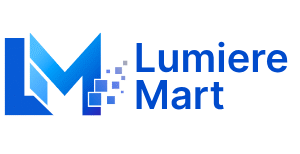One click is enough to destabilize a business. A single compromised password or a single successful phishing e-mail can result in a disastrous loss of data, financial ruin, and permanent destruction of your reputation. Having robust cybersecurity is no longer the privilege of big businesses; it has become an essential requirement of any business, big or small. Securing your computer resources is the same thing as locking up your office doors at night.
This is the guide that will take you through the key elements of a good cybersecurity strategy. We are going to discuss the most popular cyber threats, define the steps you can take to protect your organization in practice, and answer the questions that may appear to be very obvious. At the conclusion, you will have an understandable roadmap to make your company much more secure in its posture.
Understanding the Modern Threat Landscape
In order to establish a proper defense, one must first know what one is dealing with. There are always new types of cyber threats, yet the majority of them can be classified into several major categories of attacks. The consciousness of being on guard is the initial step to protection.
Phishing and Social Engineering.
Phishing has been one of the most widespread and efficient forms of attacks. The attackers use fake emails, text messages, or social network messages to make a victim divulge confidential information, such as passwords or bank account information. They usually cause some urgency, impersonate an authoritative source (such as a bank or a high-ranking executive), and result in a counterfeit login page.
Ransomware Attacks
Ransomware is a sort of malware that encrypts your files, hence rendering them entirely unreachable. The attackers then require a ransom fee, which is normally in the form of cryptocurrency, to be paid to them in exchange for the decryption key. An effective ransomware attack may put business processes on hold for several days or even weeks, causing huge financial and productivity losses. You can pay, but even then, you are not guaranteed to have your data restored.
Malware and Endpoint vulnerabilities.
Malware also has a broad spectrum of malicious software, which includes viruses, spyware, and trojans. It can be introduced to the system by rogue downloads or unprotected software vulnerabilities. The computers, laptops, and mobile devices that are part of your network are some of the major targets. Such devices are easy targets for attackers without robust endpoint security.

Developing your cybersecurity defense: A real-world guide.
It does not mean that you need an unlimited budget to protect your business. It demands a strategic, multi-layered approach. A few basic security measures will allow you to lower your risk of a harmful data breach significantly.
Enact Powerful Access Gateways.
The foundation of good security is to control access to your data. This is aimed at making sure that users can only access the information and systems that they need to do their jobs. Multi-Factor Authentication (MFA): It is among the most efficient security techniques that you could employ. MFA also involves two or more verification factors needed by the user to access an account, e.g., a password with a code delivered to the phone. This complicates the process of hacking an account by an attacker who has a stolen password.
Zero Trust Architecture: Have the mentality of never trust, always check. A zero-trust model presupposes the possibility of threats being within and outside of the network. It needs to be very strict on the verification of the identity of any individual and device that is attempting to access resources on your network, irrespective of the position.
Protect your Machines and Network.
Critical battlefields are your hardware and network infrastructure. Attackers must be kept out through proactive protection.
End point security
Have reputable antivirus and anti-malware programs installed on all the company machines. The current endpoint security services do not only include a simple scan of the viruses, but they also include threat detection, investigation, and response functionalities to help combat advanced attacks.
Periodic Patching and Updating
The major source of breaches of security is software vulnerabilities. Automatic updating of operating systems, web browsers, and other applications should be enabled whenever feasible. The main point is that a regular patching routine keeps you safe against any newly discovered exploits.
Firewalls and Network Segmentation
A firewall should be used to keep track of incoming and outgoing network traffic so that it can be controlled. Encourage the isolation of critical systems by dividing the network into segments. In this manner, when one component of the network has been compromised, the breach is confined, and it cannot readily diffuse to other locales.
Develop a Security Awareness Culture.
Technology is not sufficient; your employees are your line of defense. Highly informed staff is among your most important security assets. Security Awareness Training: Organize periodic training programs to sensitize employees on how to identify and report cyber threats, such as phishing. Simulations are used to test the knowledge and encourage good habits.
Good Cyber Hygiene: It encourages using strong, unique passwords and the use of a password manager. Educate the employees to be wary of unrequested emails, confirm their requests for sensitive data, and do not use public Wi-Fi to conduct business.
Get Ready for the Worst-Case Scenario.
No defense is perfect. A successful cyber attack is when and not if. The presence of a plan will also determine how fast and efficient the recovery will be.
Data Backups
Consistently save all important business information to an off-site backup facility that is secure. Check your backups every now and then to determine whether you can restore them or not. This is the greatest protection against a ransomware attack.
Prepare an Incident Response Plan
An Incident Response Plan is a written guideline of instructions that describe how to act in case of a security breach. It must specify the roles and responsibilities, communication procedures, and technical containment and recovery procedures. Train this strategy in order to make your team respond in a decisive manner to pressure.
Take the Next Step
Cybersecurity is not a project; it is a process that never ends. The world of threats is dynamic, and your defense needs to be up-to-date, too. With the layered approach described in this article, i.e., technical measures such as MFA and endpoint security, the human-based measures such as security awareness training, etc., you can have a robust organization that can withstand the current cyber threats.
Get started by evaluating your current state of security. Determine your strengths and key areas of weakness. You can avoid the later devastation of the breach that might happen by simply spending a little today to defend proactively.

